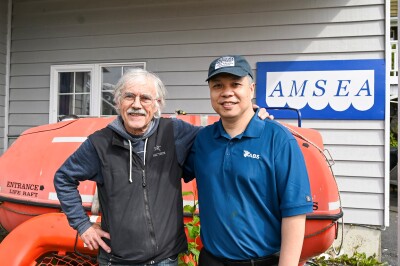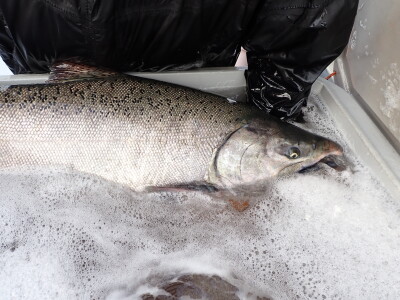Ancient's teachings
A research fishery may help Chesapeake fishermen ensure the prehistoric sturgeon's future
By Larry Chowning
It's just before dawn one late May day and there's a hazy fog in the air as the wooden deadrise boat Gloria J lays to at the dock in Deep Creek harbor just off the James River.
Her captain, George Trice of Poquoson, Va., checks the engine as his mate, Jimmy Moore, moves about getting ready for a day of fishing.
The boat, equipped with a gillnet reel aft, among other gear, appears pretty standard as gillnetters go on the Chesapeake Bay, like any other boat targeting spot, flounder, bluefish, croaker, gray trout, menhaden and striped bass — the usual fish caught in bay waters.
On this day, however, the Gloria J has an unusual target: she's going after Atlantic sturgeon, a fish commercial fishermen have not been allowed to catch in Virginia waters since 1974.
Trice and Moore fish the Chesapeake exclusively for finfish. They work a haul seine from the shores around Poquoson in the spring and early summer. In August, they go drop-gillnetting around the Chesapeake Bay Bridge Tunnel and along Virginia's Eastern Shore. In winter they gillnet for rockfish between Rudy Inlet and the Cell in Chesapeake Bay.
Normally, Trice and Moore would be haul seining in May; instead they have opted to participate in the sturgeon program. "It doesn't pay as good as when you are catching fish, but by doing this we at least know what we are going to get paid every day," Trice says.






